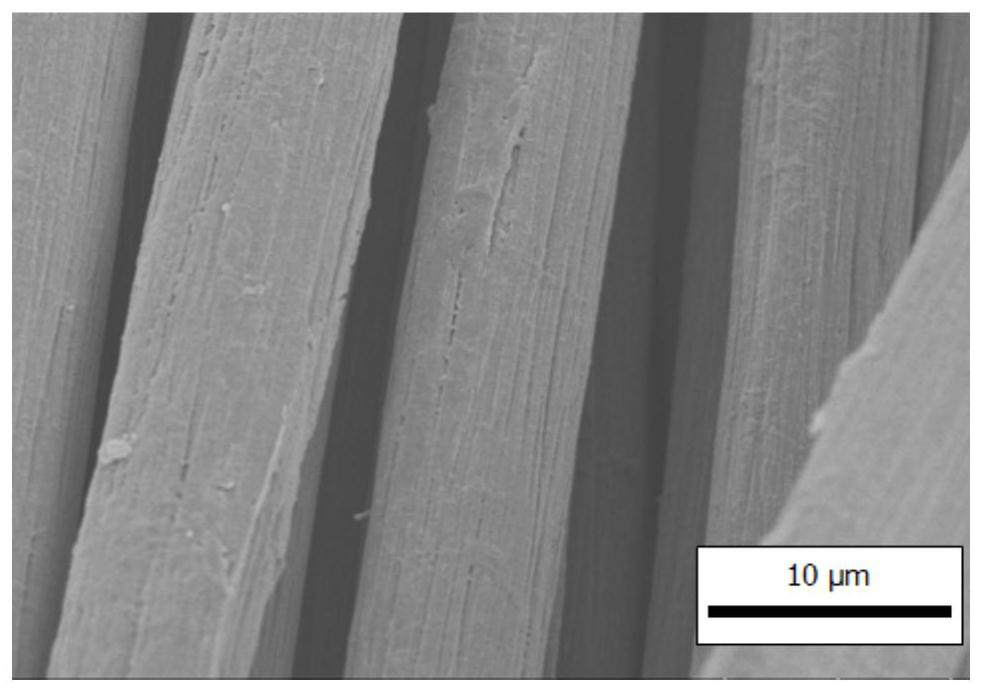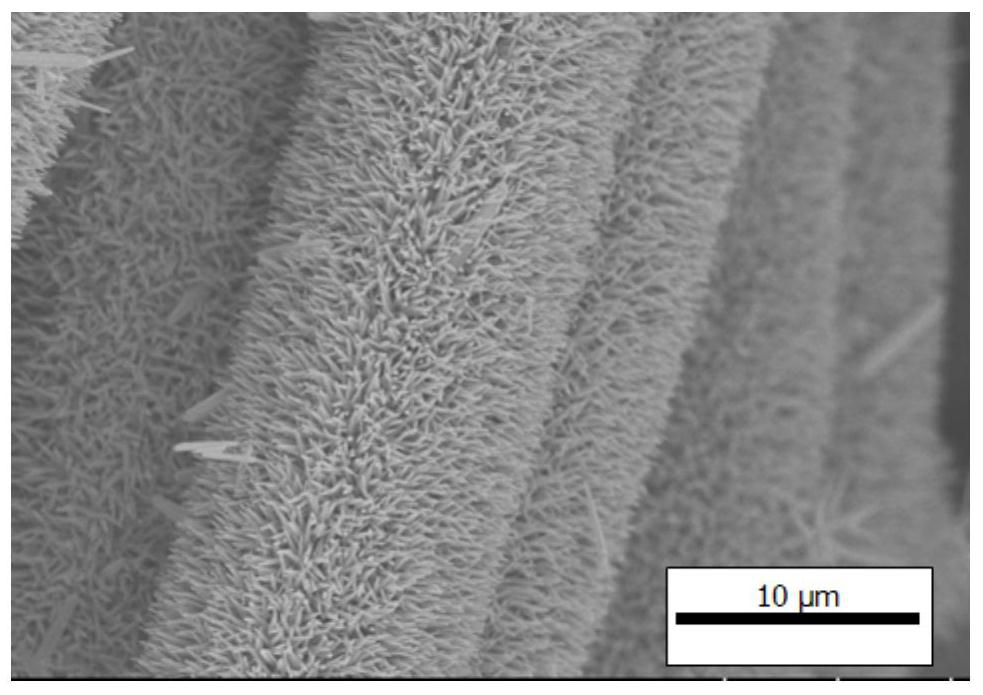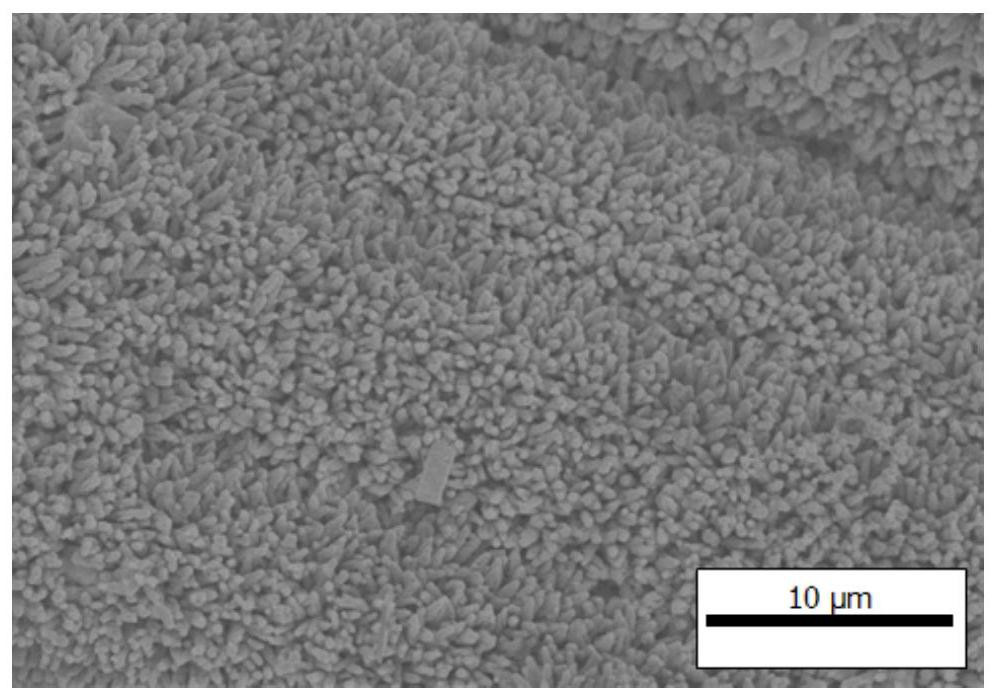Flexible sulfide-producing bacterium quantity measuring sensor and method for measuring SRB quantity in sewage by indirect method
A sulfide generation and sensor technology, which is applied to electrochemical variables of materials, instruments, measurement devices, etc., can solve the problems of simple structure calibration and large measurement numerical errors, and achieve the effect of simple measurement methods.
- Summary
- Abstract
- Description
- Claims
- Application Information
AI Technical Summary
Problems solved by technology
Method used
Image
Examples
Embodiment 1
[0058] Preparation of working electrode:
[0059] Such as Figure 1-Figure 4 As shown in, in a preferred embodiment, a flexible sulfide-producing bacteria count sensor of the present invention includes a working electrode, a reference electrode and an auxiliary electrode; wherein, the carbon cloth containing the active material is used as the working The electrode uses a saturated calomel electrode as a reference electrode, and a metal platinum electrode as an auxiliary electrode; wherein, the working electrode uses carbon cloth as a base material, and a ZnO nanoneedle array is electrodeposited on the surface of the carbon cloth to form a carbon cloth / ZnO composite material, and then the carbon cloth / ZnO composite material is hydrothermally reacted to obtain a carbon cloth / ZnO@ZIF-8 nanocolumn array, which is a working electrode.
[0060] Among them, carbon cloth / ZnO means that ZnO is generated on the surface of carbon cloth; in a hydrothermal kettle, ZnO on the surface of c...
Embodiment 2
[0066] Obtaining the linear relationship between the log value of the sulfide ion concentration and Rct:
[0067] Take sodium sulfide and prepare five sodium sulfide standard solutions with sulfide ion content of 0.5 μmol, 5 μmol, 50 μmol, 0.5 mmol, and 5 mmol respectively, and then take a portion of deionized water as a blank sample. First measure the resistance value of the aforementioned six liquids, and get Figure 5 , that is, the relationship curve between the sulfur ion content and the electrochemical resistance of the solution. It can be seen from the curve that the logarithmic value of the sulfur ion concentration is linearly related to the electrochemical resistance of the solution.
[0068] With the sensor in embodiment 1, get six working electrodes, soak 30min in six parts of liquids respectively, make the sulfide ion in the solution fully react with the ZIF-8 on the working electrode surface, then measure the electrochemistry that this solution sample presents. I...
Embodiment 3
[0072]Obtaining the standard curve of the linear relationship between the amount of SRB bacteria and electrochemical impedance:
[0073] Get the spot sewage, add enough zinc acetate solids in the spot sewage, make the sulfide ion impurity in the described spot sewage thoroughly remove, after various impurities are precipitated through centrifugation, get 10ml supernatant A, the described Supernatant A was autoclaved at 121°C for 20 minutes to remove other bacteria in the supernatant A; after mixing 10ml of the supernatant A with 90ml of SRB medium, place it in a constant temperature incubator at 37°C Incubation, sampling respectively according to different incubation times to obtain several standard samples with different SRB bacterial content, and using the MPN method to detect the SRB bacterial content of each standard sample; The electrochemical impedance value of above-mentioned standard sample solution; Adopt the measurement condition identical with embodiment 2 again (th...
PUM
 Login to View More
Login to View More Abstract
Description
Claims
Application Information
 Login to View More
Login to View More - R&D
- Intellectual Property
- Life Sciences
- Materials
- Tech Scout
- Unparalleled Data Quality
- Higher Quality Content
- 60% Fewer Hallucinations
Browse by: Latest US Patents, China's latest patents, Technical Efficacy Thesaurus, Application Domain, Technology Topic, Popular Technical Reports.
© 2025 PatSnap. All rights reserved.Legal|Privacy policy|Modern Slavery Act Transparency Statement|Sitemap|About US| Contact US: help@patsnap.com



